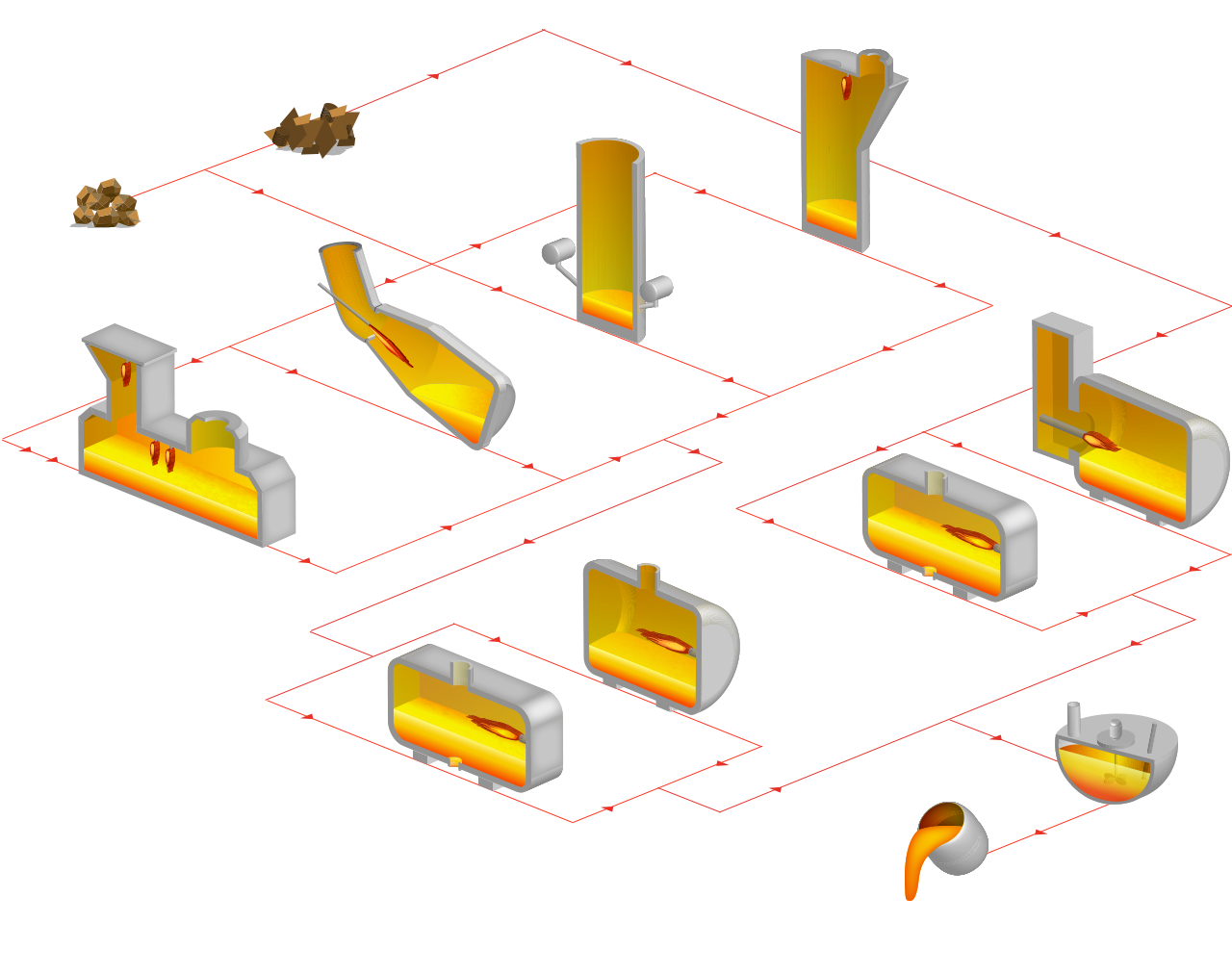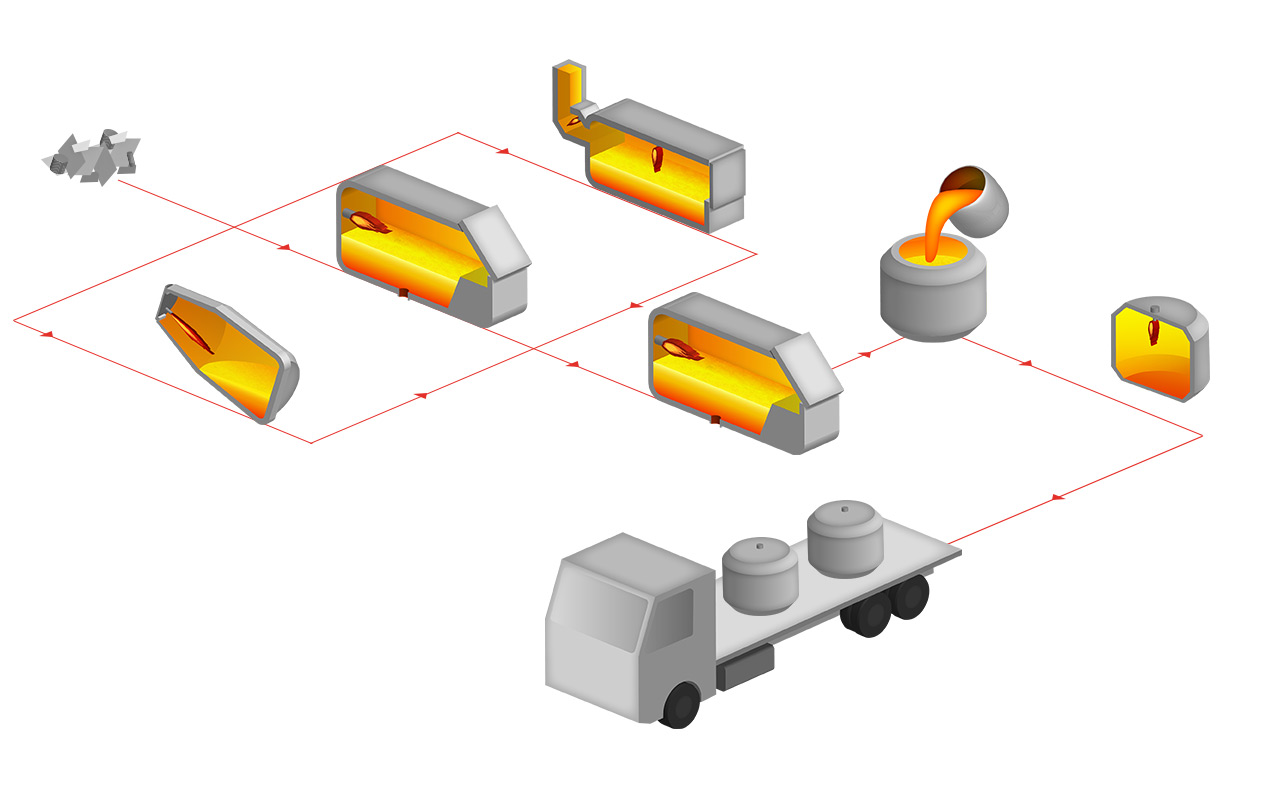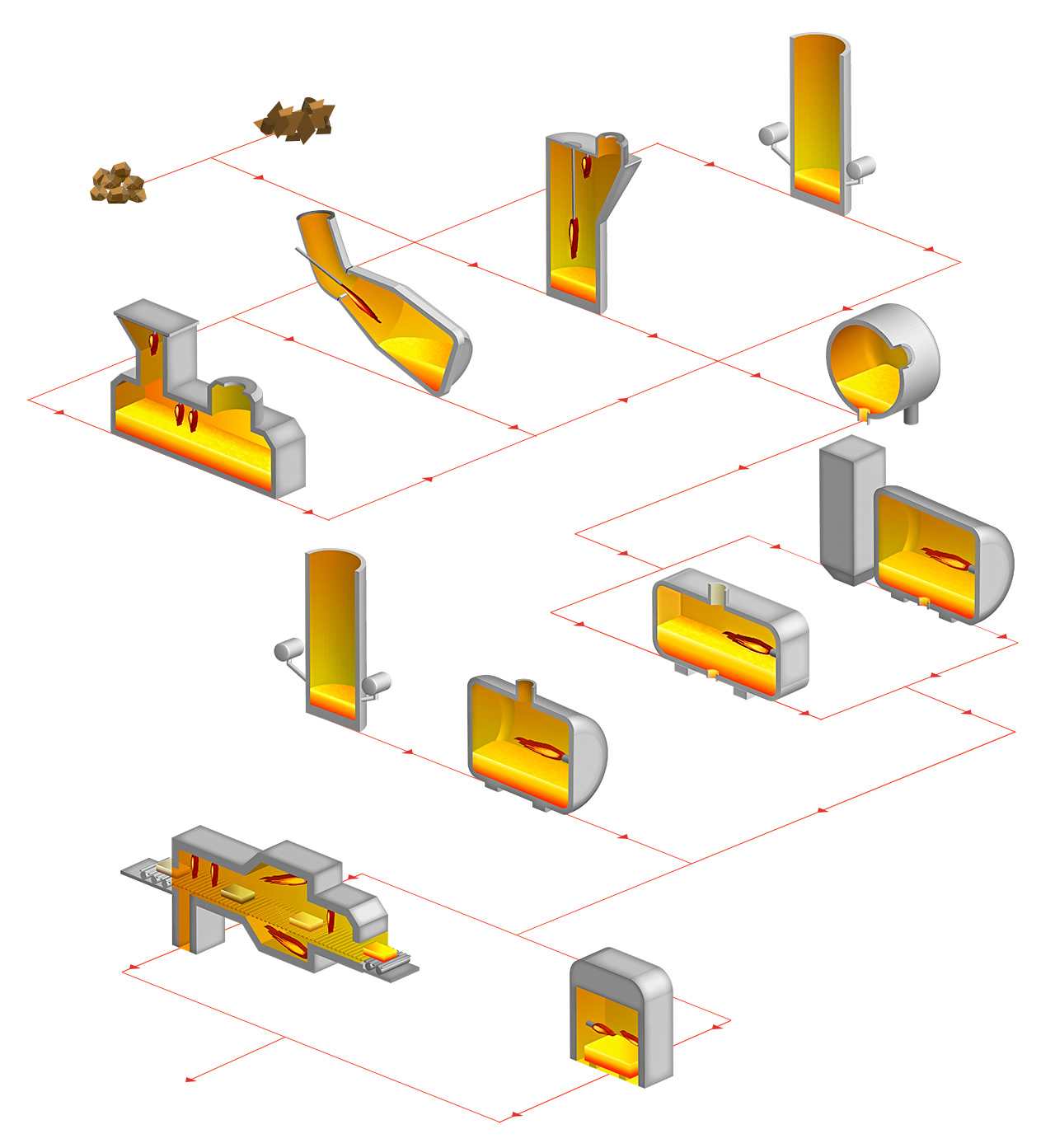All customerprocesses that use gases - Strategic application technology
Nested Applications
Nested Applications
Categories Navigation
Asset Publisher
Lead smelting and refining process
Lead is manufactured over several steps: The starting material, primary lead (lead-containing ores) or secondary lead (recycled, lead-containing waste, in particular spent batteries) is first prepared by roasting and/or physical processes. Subsequently, the starting materials are reduced in a melting furnace and freed from accompanying substances, whereby different melting processes are used depending on the starting material. The melted material is further freed from contamination in a refining process and poured into moulds, it is then available as raw lead for further processing.
Gases and technologies for Heat treatment processes
Many metals and advanced ceramics acquire their optimum surface quality and the required mechanical properties through suitable heat treatment. Here, gases are an indispensable aid. Messer Group has developed a wide range of special processes to make the heat treatment of metals and technical ceramics more controllable, reproducible, and economical.
The term heat treatment describes a process in which a work piece or part of a work piece is intentionally subjected to a specific time-temperature sequence. In some instances, the work piece may additionally be subjected to other physical and/or chemical influences. The aim of heat treatment is to impart properties to a work piece which are required for further processing steps or for the intended application.
This definition covers all thermal, thermo-chemical and thermo-mechanical processes for the treatment of work pieces with which mechanical material properties are to be selectively changed. Furthermore, the appearance of the surface of work pieces can be influenced. These properties are optimized by structural transformations on the surface or in the entire work piece and by chemical changes on the surface.
Heat treatment takes place in furnaces that are temperature controlled (heating, soaking and cooling steps), usually using a process gas atmosphere to prevent, e.g. undesirable discoloration or to alter the surface chemically. The influenceable properties are, e.g. deformability, residual stresses, hardness, toughness and surface condition.
Aluminum melting process
Just over 50% of aluminum products are produced from recycled secondary aluminum, with the main process steps being scrap conditioning, melting and casting. Depending on the contamination and bulk of the scrap, various types of furnace are used during melting: rotary drum furnaces, chamber furnaces or shaft furnaces. To remove impurities, the aluminum melt is cleaned by gas purging. This takes place in holding furnaces or specially designed ladle stations. In the case of the melt being transported in ladles on vehicles to another processing location, it is necessary to preheat the ladles with burners.
Copper smelting and refining process
Copper production is carried out over several stages. Copper is either produced from copper ore (primary copper) or copper scrap (secondary copper). During primary copper manufacture, copper concentrate is used and reduced to blister copper after roasting. For secondary copper production copper scrap, slag, dross, dust or slurries are melted together with coke and slag-forming additives.
Various smelting processes are used. The resulting liquid copper matte (Cu 60 to 65%) is processed to blister copper (Cu approx. 98%) in a convertor. After fire-refining in anode furnaces the Cu purity is over 99%.
Single-origin scrap of a high purity is used for the production of wire and pipes using a direct smelting process with special shaft furnaces and immediately cast.
Heat treatment can modify the material structure and other properties of copper and adapt it for its intended use. Various furnaces such as batch type or continuous type furnaces are available for these processes. Bell furnaces are used for the final treatment.
Heat treatment non-ferrous metals in the non-ferrous metals sector
Many metals acquire their optimum surface quality and the required mechanical properties through suitable heat treatment. Here, gases are an indispensable aid. Messer Group has developed a wide range of special processes to make the heat treatment of metals more controllable, reproducible, and economical.
The term heat treatment describes a process in which a work piece or part of a work piece is intentionally subjected to a specific time-temperature sequence. In some instances, the work piece may additionally be subjected to other physical and/or chemical influences. The aim of heat treatment is to impart properties to a work piece which are required for further processing steps or for the intended application.
This definition covers all thermal, thermo-chemical and thermo-mechanical processes for the treatment of work pieces with which mechanical material properties are to be selectively changed. Furthermore, the appearance of the surface of work pieces can be influenced. These properties are optimized by structural transformations on the surface or in the entire work piece and by chemical changes on the surface.
Heat treatment takes place in furnaces that are temperature controlled (heating, soaking and cooling steps), usually using a process gas atmosphere to prevent, e.g. undesirable discoloration or to alter the surface chemically. The influenceable properties are, e.g. deformability, residual stresses, hardness, toughness and surface condition.




